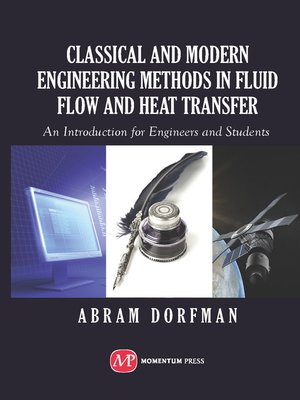Classical and Modern Engineering Methods in Fluid Flow and Heat Transfer
ebook ∣ An Introduction for Engineers and Students
By Abram Dorfman

Sign up to save your library
With an OverDrive account, you can save your favorite libraries for at-a-glance information about availability. Find out more about OverDrive accounts.
Find this title in Libby, the library reading app by OverDrive.



Search for a digital library with this title
Title found at these libraries:
| Library Name | Distance |
|---|---|
| Loading... |
This book presents contemporary theoretical methods in fluid flow and heat transfer, emphasizing principles of investigation and modeling of natural phenomena and engineering processes. It is organized into four parts and 12 chapters presenting classical and modern methods. Following the classical methods in Part 1, Part 2 offers in-depth coverage of analytical conjugate methods in convective heat transfer and peristaltic flow. Part 3 explains recent developments in numerical methods including new approaches for simulation of turbulence by direct solution of Navier-Stokes equations. Part 4 provides a wealth of applications in industrial systems, technology processes, biology, and medicine. More than a hundred examples show the applicability of the methods in such areas as nuclear reactors, aerospace, crystal growth, turbine blades, electronics packaging, optical fiber coating, wire casting, blood flow, urinary problems, and food processing. Intended for practicing engineers and students, the book balances strong formulation of problems with detailed explanations of definitions and terminology. Author comments give attention to special terms like singularity, order of magnitude, flow stability, and nonisothermicity characteristics. More than 400 exercises and questions are offered, many of which divide derivations between you and the author. For these exercises, the author describes the solution method and the results in the text, but you are directed to complete specific portions of the solutions. You then have a choice to accept the results or to further explore the underlying problem. Extensive references are provided for further study.







